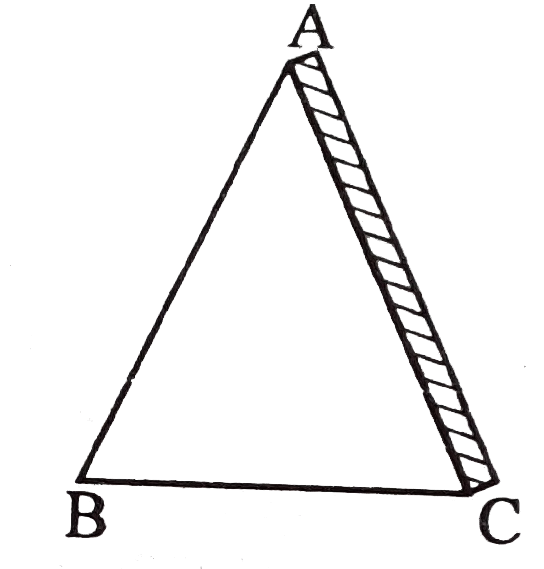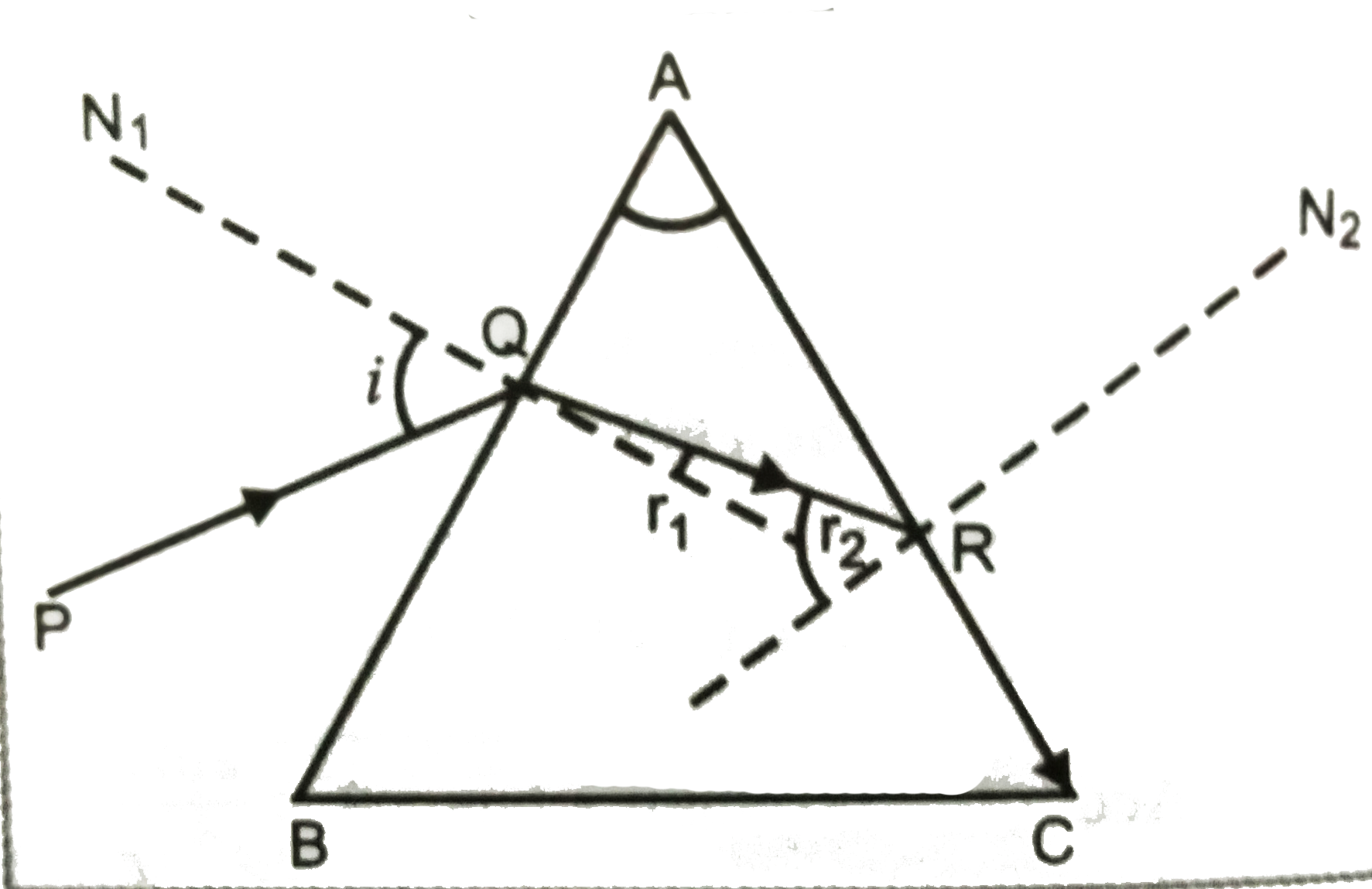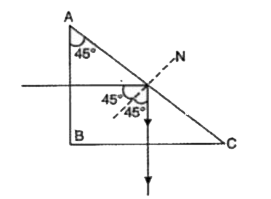A prism (μP=√3) has an angle of prism A=30∘.A thin film (μf=2.2) is coated on face AC as shown in the figure.Light of wavelength 550nm is incident on the face ABat60∘angle of incidence,find
(I)the angle of its emergence from the faceACand

(ii)the minimum thickness (in mn) of the film for which the emerging light is of maximum possible intensity.
a. Given, i1=60∘,A=30∘,μprism=√3
From Snell's law,
μ1sini1=1√3×sin60∘=1√3×√32=12s
r1=30∘
Also, r1+r2=A⇒r2=A−r1=30∘−30∘=0∘
That is, the ray is incident normally on face AC and angle of emergence i2=0∘
(b) For maximum intensity, the thickness of coated film must satisfy the condition of maxima in transmitted light, i.e.,
2μtcosr=(2n−1)λ/2
⇒t=(2n−1)λ4μcosr
For normal incidence, r=0. So, cosr=1 and for minimum thickness, n=1
∴tmin=λ4μ=6600Å4×2.2=750Å
 .
.
Topper's Solved these Questions
- WAVE OPTICSBOOK - CENGAGE PHYSICSCHAPTER - WAVE OPTICSEXERCISE - Exercise 2.1
12 Videos
- WAVE OPTICSBOOK - CENGAGE PHYSICSCHAPTER - WAVE OPTICSEXERCISE - Exercise 2.2
22 Videos
- WAVE OPTICSBOOK - CENGAGE PHYSICSCHAPTER - WAVE OPTICSEXERCISE - QUESTION BANK
37 Videos
- THERMODYNAMICSBOOK - CENGAGE PHYSICSCHAPTER - THERMODYNAMICSEXERCISE - QUESTION BANK
34 Videos
- WAVESBOOK - CENGAGE PHYSICSCHAPTER - WAVESEXERCISE - QUESTION BANK
38 Videos
Similar Questions
Knowledge Check
Light falls at normal incidence on one face of a glass prism of refractive index √2. Then the angle of emergence when the angle of the prism is 45∘
A45°B60°C15°D90°Light ray is incident on a prism of angle A=60∘and refractive indexμ=√2.the angle of incidence at which the emergent ray grazes the surface is given by
Asin−1(√3−12)Bsin−1(1−√32)Csin−1(√32)Dsin−1(2√3)Light ray is incident on a prism of angle A=60∘ are refractive index μ=√2. The angle of incidence which the emergent rays grazes the surface is given
Asin−1(√3−12)Bsin−1(√2−12)Csin−1(√32)Dsin−1(23√3)
A ray of light the face AB of a glass prism of refractive index μ at an angle of incidence i. Find the value of i such that no ray emerges from the face AC of the prism. Given angle of prism is A.

View SolutionA ray of light enters the face AB of a glass prism of refractive index μ at an angle of incidence i. Find the value of i such that no ray emerges from the face AC of the prism, given angle of prism is A.
View SolutionA ray of light passes through a right angled prism as shown in the figure. State the angle of incidence at the faces AC and BC.

View SolutionA ray of light is incident at an angle of 60∘ on one face of a prism of angle 30∘. They ray emerges normally from the other face of the prism. The refractive index of the prism material is
View SolutionA beam of monochromatic light is incident at i=50∘ on one face of an equilateral prism, the angle of emergence is 40∘, then the angle of minimum deviation is :
View Solution
